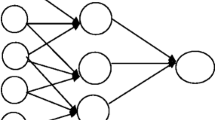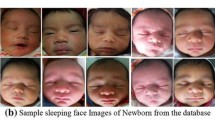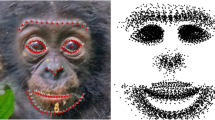Abstract
The attractiveness of a baby face image depends on the perception of the perceiver. However, several recent studies advocate the idea that human perceptual analysis can be approximated by statistical models. We believe that the cuteness of baby faces depends on the low level facial features extracted from different parts (e.g., mouth, eyes, nose) of the faces. In this paper, we introduce a new problem of classifying baby face images based on their cuteness level using supervised learning techniques. The proposed learning model finds the potential of a deep learning technique in measuring the level of cuteness of baby faces. Since no datasets are available to validate the proposed technique, we construct a dataset of images of baby faces, downloaded from the internet. The dataset consists of several challenges like different view-point, orientation, lighting condition, contrast and background. We annotate the data using some well-known statistical tools inherited from Reliability theory. The experiments are conducted with some well-known image features like Speeded Up Robust Feature (SURF), Histogram of Oriented Gradient (HOG), Convolutional Neural Network (CNN) on Gradient and CNN on Laplacian, and the results are presented and discussed.











Similar content being viewed by others
References
Allen MJ, Yen WM (2002) Introduction to measurement Theory. Waveland press, long grove
Bay H, Tuytelaars T, Gool LV (2006) SURF: Speeded up robust features. In: Proceedings of European conference on computer vision (ECCV), pp 404–417
Collobert R, Bengio S (2004) Links between Perceptrons, MLPs and SVMs. In: Proceeding of international conference on machine learning (ICML), pp 23–30
Dalal N, Triggs B (2005) Histograms of oriented gradients for human detection. In: Proceedings of IEEE computer vision and pattern recognition (CVPR), pp 886–893
Garg S, Tripathi A, Cutrell E (2016) Accurate eye center localization using snakuscules. In: Proceedings of winter conference on applications of computer vision (WACV), pp 1–8
Gunes H (2011) A survey of perception and computation of human beauty. In: Proceedings of ACM multimedia international workshop on social signal processing, pp 19–24
Laurentini A, Bottino A (2014) Computer analysis of face beauty A survey. Comput Vis Image Underst 125:184–199
Meisner G Facial Analysis and the Beauty Mask. http://www.goldennumber.net/beauty/ (Accessed as on 30th May, 2016)
Ploj B (2014) Advances in machine learning research (chapter 3). Nova Science Publishers, Hauppauge
Schmid K, Marx D, Samal A (2008) Computation of a Face Attractiveness Index Based on Neoclassical Canons, Symmetry, and Golden Ratios. Pattern Recogn 41(2008):2710–2717
Simonyan K, Zisserman A (2015) Very deep convolutional networks for large-scale image recognition. In: Proceedings of international conference on learning and representation (ICLR)
Viola P, Jones M (2001) Rapid object detection using a boosted cascade of simple features. In: Proceedings of IEEE computer vision and pattern recognition (CVPR), pp 511–518
Viola P, Jones M (2004) Robust real-time face detection. Int J Comput Vis 57(2):137–154
Wang P, Tran LC, Ji Q (2006) Improving face recognition by online image alignment. In: Proceedings of international conference of pattern recognition (ICPR), pp 311–314
Author information
Authors and Affiliations
Corresponding author
Rights and permissions
About this article
Cite this article
Makula, P., Kumar, A. & Mukherjee, S. Measuring level of cuteness of baby images: a supervised learning scheme. Multimed Tools Appl 77, 16867–16885 (2018). https://doi.org/10.1007/s11042-017-5257-x
Received:
Revised:
Accepted:
Published:
Issue Date:
DOI: https://doi.org/10.1007/s11042-017-5257-x




